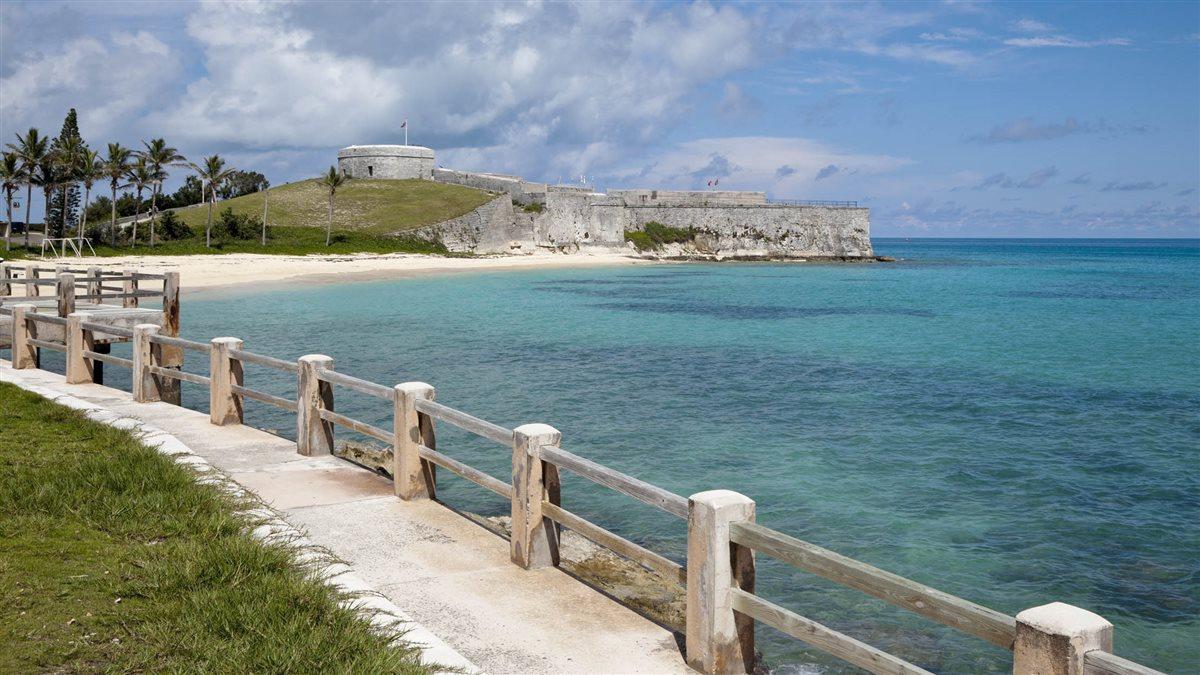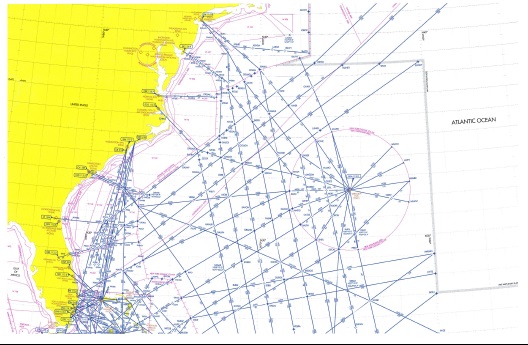Bermuda

Overview
 Bermuda is a United Kingdom overseas territory in the Atlantic Ocean, located 560 miles east of Cape Hatteras, NC. The beautiful tropical island is a favorite destination for many vacationers. The island's 21 square miles offer just one airport - L.F. Wade International Airport (BDA/TXKF), serviced by several airlines, which is the primary way Bermuda stays connected with the outside world. The island is also a popular cruise destination.
Bermuda is a United Kingdom overseas territory in the Atlantic Ocean, located 560 miles east of Cape Hatteras, NC. The beautiful tropical island is a favorite destination for many vacationers. The island's 21 square miles offer just one airport - L.F. Wade International Airport (BDA/TXKF), serviced by several airlines, which is the primary way Bermuda stays connected with the outside world. The island is also a popular cruise destination.
Occasionally, AOPA members ask about flying their general aviation aircraft to Bermuda. While turbine aircraft and business jets make the flight, it is rarely attempted by piston aircraft, though it may be possible with significant pre-planning. The two biggest challenges with flying a piston aircraft to Bermuda are fuel and long-distance communication capability.
The chart on this page is linked to the FAA's Web site. It’s the Western Atlantic Route Chart (WATRS) chart on the Planning tab.
Fuel
The airport only sells JetA fuel; 100LL avgas is not sold anywhere on the island. This means a piston aircraft would have to carry enough fuel to make the round trip flight. With headwinds often a factor, the flight time is too long for most GA aircraft. A few pilots have attempted to ship fuel ahead and have met with mixed success.
Communication
Advisory Circular 91-70A, Oceanic and International Operations contains general information and guidance for operators planning oceanic flights, including authorizations needed for operations outside the continental United States. Chapter 13. General Aviation Short-Range Aircraft Oceanic Operations is particularly important for general aviation pilots. Chapter 13, Section 3-4, paragraph (d) Summary of Communication and Reporting Procedures states: "Maintain continuous contact with the controlling agency. This can be through VHF, HF, data link, SATCOM Voice or Selective Call (SELCAL). The range of VHF is approximately 200 NM; communication beyond that distance requires HF or SATCOM data link." Bermuda is 560 miles from the North Carolina coast, so HF radios are required. Bermuda Air Traffic Control does report U.S. pilots whose aircraft are not so equipped to New York Air Route Traffic Control Center (ARTCC) and NY ARTCC does investigate the reports.
Safety Management System (SMS)
Bermuda has a SMS mandate requiring business aviation operators to have an SMS program in place, or to have started the SMS implementation process. We have heard that although this is required, it may not be strictly enforced. For more information, visit the Government of Bermuda/Ministry of Tourism Development and Transport/Department of Civil Aviation.
Preparation
Pilot-in-Command
The pilot in command must have a current:
- Passport
- Pilot certificate with an English-proficient endorsement
- Medical certificate (BasicMed not accepted)
- Restricted radiotelephone operators permit. For more information on FCC requirements, click here.
- Letter of Authorization if the aircraft is not registered in the pilot's name
Passengers
- Each passenger must have a current passport
- Children traveling with only one parent must have a notarized statement of approval from the absent parent stating the dates of the trip.
Pets
- Import permits are required for all animals arriving in Bermuda. If the animal does not have the permit, it will not be allowed off the plane and the aircraft would need to depart. See the L.F. Wade International Airport web site for more information.
Aircraft
All U.S. registered aircraft must have:
- A standard Airworthiness Certificate
- A permanent registration certificate (no temporary certificates/pink slips)
- A radio station license. For more information on FCC requirements, click here.
- A HF radio
- Operating limitations information
- Weight and Balance information
- A life vest/flotation device for each person aboard (It’s recommended you also carry a life raft.)
- An ID data plate
- 12-inch registration marks
- Transponder with Mode C
- Aircraft with fuel tanks installed in the baggage or passenger compartments must have Form 337 on board.
- ELT communications on the aeronautical emergency frequency 121.5 MHz and/or 406 MHz.
Customs and Border Protection (CBP)
- CBP General Aviation Processing webpage – central CBP resource for GA operations, including
- eAPIS links and instructions
- Border Overflight Exemption (BOE) information
- GA Airport Fact Sheets
- FAQs
- General cross-border operating instructions and expectations
- Direct link to eAPIS
- Direct link to DHS user fee decal information
- Allow a few weeks for delivery. Decals can be purchased online. For decal questions, call (317)-298-1245 or send an email to [email protected].
- All pilots crossing the U.S. border inbound or outbound are required to use Custom and Border Protection's (CBP) Electronic Advance Passenger Information System (eAPIS) to provide crew, passenger(s), aircraft, and trip information. The eAPIS information must be filed at least one hour before departing from or arriving in the United States, but pilots can file as far in advance as they wish, giving the option to provide information for the return trip via Internet before leaving home. eAPIS is not required if you overfly Canada going from one U.S. airport to another without landing.
- All pilots crossing the U.S. border inbound must secure permission to land from their CBP port of arrival, after submitting eAPIS and before departing from their country of origin.
ICAO Flight Plan
-
Use of an ICAO flight plan is currently required if the flight will enter international airspace. While an ICAO flight plan and an FAA flight plan are similar in many ways, there are some important differences. Some items are the same on both forms: aircraft ID or tail number; aircraft type, fuel endurance, and number of people on board. New items on the ICAO flight plan include a Wake Turbulence category, and Type of Flight. The biggest change, though, is found in the equipment suffixes box, box 10. The ICAO codes used to denote the type of equipment on board the aircraft are different than the codes used by the FAA. To find out more, please view this short AOPA video.
Departure
Departing the U.S.
- Pilots must be in communication with ATC on a discrete squawk code. AC 91-70 states that the 123.45 MHz is the air-to-air communication frequency in the NAT region, which includes New York FIRs. HF radios are to contact ATS units when beyond the range of VHF.
- All aircraft must be on an activated IFR or Defense VFR flight plan for flying through the coastal ADIZ.
In Country
Arrival in Bermuda
The arrival airport is L.F. Wade International (BDA/TXKF). All persons traveling between the United States and Bermuda are required to present a passport to enter Bermuda. Bermuda does not require tourist visas or vaccinations, nor does it restrict currency.
Travelers with questions concerning travel to Bermuda may contact the British Embassy in Washington, DC or any of the British Consulate General offices across the United States. Visit the British Embassy website for more information. Click here to read a fact sheet about Bermuda.
The U.S. Department of State, Bureau of Consular Affairs also has an informative web page on travel to Bermuda. You will find information on Embassies and Consulates; entry, exit, and visa requirements; safety and security; public health concerns; and traffic and road conditions on the island.
Return
Returning to the U.S.
- File an activated IFR or Defense VFR flight plan for flying through the U.S. ADIZ with ADCUS (advise customs) in the remarks section
- Call U.S. CBP at least one hour and no more than 23 hours before your planned U.S. arrival time. (Do not rely only on ADCUS – call to verify CBP has your flight plan).
- File an eAPIS arrival manifest (if you filed eAPIS reports for both legs of your trip before you left the U.S., you do not have to file again).
- Plan to land at a U.S. CBP airport of entry after crossing the U.S. border. Be on time – a little late is better than early.